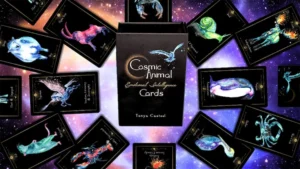Capybara
Meaning & Symbolism
Understanding

The Capybara, the world’s largest rodent, is a master of peaceful coexistence. Known for its gentle nature, the Capybara harmoniously shares its environment with a wide variety of creatures—even predators like Crocodiles. This unique ability to live alongside both friends and foes alike symbolizes the need for understanding and consideration.
Capybaras live in large groups, often with 10 to 20 members, and exhibit a high level of cooperation and mutual care. This reminds us that understanding goes beyond simply being heard—it’s about fostering a deeper connection through active listening and shared experience. In our own lives, we can follow the example of the Capybara by prioritizing group harmony, listening without judgment, and offering space for others to express themselves without fear of rejection.
However, while being understood feels good, it’s important to allow others the freedom to disagree. The Capybara doesn’t force its will on others or seek to dominate its surroundings; it adapts and thrives through mutual respect. Similarly, we can’t always make people understand our perspective, and sometimes we must accept that others won’t see things our way. In these situations, it’s wiser to let go rather than drain our energy trying to make them see our point of view. Instead of demanding to be understood, we can practice consideration by recognizing differences. Everyone has their own preferences, perspectives, and ways of doing things. Respect these differences, even when they challenge your own way of thinking.
Just as the Capybara lives peacefully among both its own kind and those outside its group, we must be mindful not to confine ourselves to echo chambers where everyone thinks the same way. The Capybara teaches us that diversity and differences, whether in nature or human relationships, can lead to richer, more fulfilling connections. Labeling others as enemies simply because they think differently is a trap. Instead, embrace them as competitors or challengers to our beliefs, not as threats. The difference lies in our ability to respect their viewpoints while still holding space for our own.
What’s crucial to remember is that understanding others doesn’t mean losing yourself. Like the Capybara, which remains centered and secure within its own group while still mingling peacefully with different species, you can hold space for someone else’s perspective without compromising your own beliefs. You don’t have to agree with someone to understand them. By staying rooted in your own truth, you can expand your awareness of others without being swayed by ideologies that don’t align with who you are. Understanding and empathy don’t require you to abandon your values—they simply require you to respect and see the humanity in others, even when their path diverges from yours.
The Capybara also represents the dangers of rigid ideology and group identity. When we cling too tightly to labels or tribalism, we cut ourselves off from the possibility of understanding others. Instead, we can take inspiration from the Capybara’s gentle adaptability and inclusive nature of swimming with the Crocodiles. By seeking to understand diverse perspectives, and remaining open to learning, we can foster a more harmonious and compassionate world.
- In what situations do I find myself making assumptions instead of seeking clarification?
- How can I improve my active listening skills to better understand others’ perspectives?
- Am I creating an echo chamber by surrounding myself with only like-minded individuals?
- How can I practice consideration and understanding, even with those whose values I don’t share?
- How can I remain centered in my own beliefs while staying open to understanding others?
-Tanya Casteel ©Cosmic Animals
Cosmic Animal Cards & Guidebook


I want to hear about your Capybara experiences. What stories or dreams have YOU had? Please share and join in the conversation below!

0 Comments